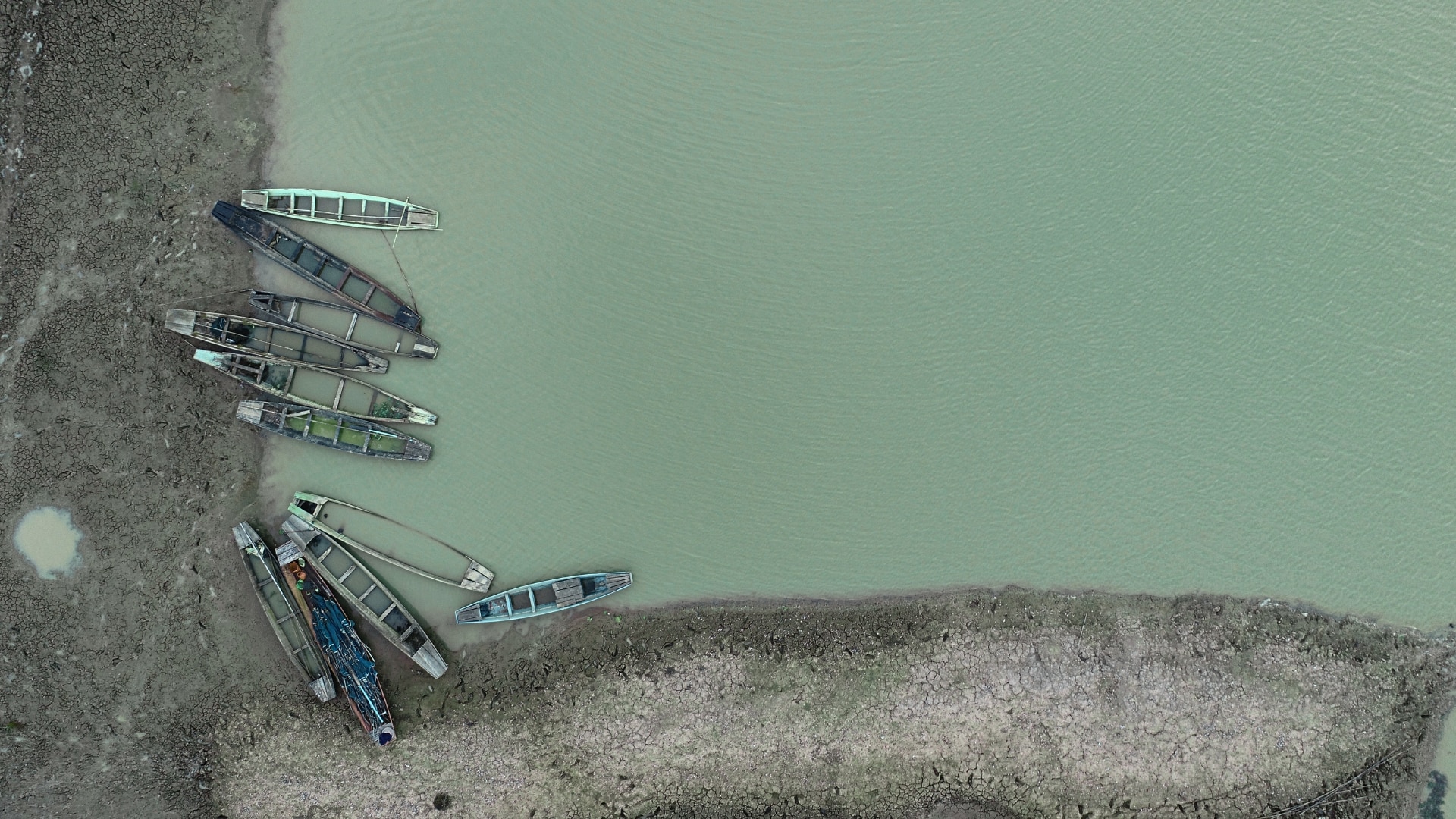Summary
-Low dissolved oxygen (DO) is indicated by high plant abundance, slow-moving water, and the presence of organic waste.
-Excess nutrients and warm, stagnant water cause harmful algal blooms (HABs), leading to oxygen depletion in lakes.
-Oxygen depletion can trigger mass fish deaths and disrupt aquatic ecosystems, with ecological and economic consequences.
- AI and real-time monitoring can help detect nutrient pollution early, enabling proactive management of HABs and eutrophication.
The Impact of Oxygen Depletion in Global Lakes
“All complex life depends on oxygen. It’s the support system for aquatic food webs. And when you start losing oxygen, you have the potential to lose species.” – Kevin Rose, a freshwater biologist at Rensselaer Polytechnic Institute.
Algae play a crucial role in utilizing carbon dioxide during photosynthesis to generate oxygen and carbohydrates. this contributes to maintaining atmospheric carbon dioxide levels.
Lakes are losing oxygen 2.75 to 9.3 times faster than the oceans, a decline that will have impacts throughout the ecosystem. According to a recent study published in Science Advances, short-term heat waves and long-term global warming are lowering the amounts of dissolved oxygen (DO) on the surface of lakes worldwide. Global lakes have an average rate of deoxygenation that is higher than that of rivers and seas. The investigation showed that 83% of the lakes under study had ongoing deoxygenation. 55% of the surface oxygen loss in lakes worldwide was caused by decreasing solubility brought on by global warming. However, 10% of the loss of oxygen on the surface is caused by eutrophication.The influence of heat waves on lake deoxygenation may worsen in the future, especially in North America and Europe, as their frequency and severity rise.
Rising heat waves causing evaporation
Lakes, fresh and marine waters are experiencing greater evaporation as our warmer atmosphere holds more water. This is speeding up Earth’s water cycle, causing savage lurches from intensely dry to flooding wet conditions.
Warm air carries more water vapour and has more energy available to convert liquid water to gas, which leads to more evaporation. The rate at which water evaporates from lakes, rivers, and soil surfaces rises with warmth. Researchers from the Chinese Academy of Sciences, lead by Yibo Zhan, studied how short-term heatwaves and long-term climate change are affecting oxygen levels in lakes around the world. They used model data from 15,535 lakes to understand the trends. The study found that lakes in tropical regions are most at risk. In the future, 238 lakes could face serious oxygen problems under a moderate climate scenario, and 279 lakes under a more extreme one. Lake Victoria, Africa’s largest lake by area, is expected to face long-term low oxygen levels.
Global heatwaves
The researchers discovered atmospheric heat wave episodes over worldwide lakes between 2003 and 2023. Heat waves over worldwide lakes lasted for an average of 15 days annually. Globally, 85% of the studied lakes have experienced a gradual increase in the number of heatwave days per year. Over the past 20 years, the number of heat wave days has grown on all six continents, with Africa seeing an increase of 1.2 days annually, Asia 0.7 days annually, Europe 0.6 days annually, North America 0.5 days annually, Oceania 1.4 days annually, and South America 0.6 days annually.
What causes oxygen depletion in lakes?
Algae produce toxins and they occur when an excessive amount of algae grow waterbodies, leading to oxygen depletion. This can happen due to a variety of factors, but the most straightforward reasons according to the EPA are as follows:
-
- Excess Nutrients: Nutrients like nitrogen and phosphorus, often from agricultural runoff and sewage discharge, can stimulate the growth of algae. These nutrients act as fertilizers, causing algal species to multiply rapidly.
- Changes in Water Temperature and pH: Warmer water temperatures and altered pH levels can favor the growth of both macroscopic algae and microscopic algae.
- Lack of Water Circulation: Stagnant water conditions can lead to the accumulation of algae, as there is less movement to disperse them.
- Human Activities: Agricultural practices, urban runoff, and industrial discharges introduce excess nutrients and pollutants into water bodies.
- Ammonia: As ammonia undergoes oxidation (nitrification), oxygen is used up; low oxygen levels raise ammonia levels by preventing nitrification.
Sheeps seen drinking water from agricultural waterbody
What are some of the common indicators of low DO in water?
Biology of the environment as well as different environmental factors depend on the condition of the waterbodies. Some common symptoms of low oxygen levels are as follows:
High plant abundance: Because of their strong night-time respiration, Land plants require high oxygen. Large quantities of algae (in the water column or on solid substrates) or aquatic vascular plants may indicate low DO. DO supersaturation may occur during the day, with decreasing DO at night. This is when plant abundance, temperatures, and light levels are high and turbulence is low.
Slow-moving water: Low DO results from very slow-moving or motionless water due to a lack of turbulent aeration. Furthermore, slow-moving water has a tendency to warm, which lowers the water column’s DO saturation levels. Slow currents may also make it more difficult for organisms to receive oxygen.
Presence of organic wastes: The remains of any living or extinct organism are known as organic wastes (e.g., dead plants or animals, leaves, animal droppings, sewage). Since, this turns to nutrient pollution, it uses up oxygen. The presence of such organic debris in or discharged into a body of water points to low DO as a possible cause.
Relation between fish deaths and low oxygen levels
Declines in dissolved oxygen severely disrupt ecosystems, creating ‘dead zones’ that are too suffocating for wildlife and often causing aquatic deaths. These dead zones referring to mass die-offs of aquatic organisms is called the macabre phenomenon which are increasing in waterways around the world. In recent years, eels in New Zealand, Murray cod in Australia, and multiple fish species and mussels in Poland and Germany have all served as examples of this macabre phenomenon.

Hundreds of small fish carcasses and a large dead striped bass washed ashore at Lake Merritt/Aug. 28, 2022.
Effects on Aquatic Ecosystems
Harmful algal blooms can have significant impacts on aquatic ecosystems, including:
- Reduced Oxygen Levels: As algae die and decompose, they consume oxygen. This leads to hypoxic conditions that can cause the death of fish and other aquatic animals.
- Production of Toxins: Some algal species produce toxins that can harm aquatic life and even humans. These toxins can accumulate in the food chain, affecting a wide range of organisms.
- Disruption of the Food Chain: Algal blooms can outcompete other aquatic plants and animals for resources. This disrupts the natural balance of the ecosystem.
- Decreased Water Quality: The presence of harmful algae can degrade water quality. This makes it unsafe for human consumption and recreational activities.
In addition to ecological impacts, HABs can also have significant economic consequences, such as:
- Loss of Revenue: Fishing and tourism industries can suffer due to the decline in water quality and the death of aquatic life.
- Increased Costs: Water treatment and management costs can rise as efforts are made to control and mitigate the effects of algal blooms.
- Damage to Habitats: The long-term health of aquatic habitats can be compromised, affecting biodiversity and ecosystem services.
How future water trends can help?
It’s become necessary to monitoring nutrient pollution and parameters in waterbodies to prevent excessive nutrient-growth. The benefit of understanding these patterns is crucial for timely intervention and management.
-
-
- Artificial Intelligence in Water Management: Artificial intelligence (AI) is revolutionizing the water management industry. By enabling utilities to make data-driven decisions and optimize their operations. AI-powered systems can analyze vast datasets to predict water demand, detect leaks, and identify inefficiencies. For example, AI-powered sensors can monitor changes in water quality and alert utilities to potential issues. This can solve the issue before it escalates. Moreover, AI can help optimize treatment processes, reducing energy consumption and operational costs. By harnessing the power of AI, utilities can enhance their ability to provide a consistent supply of safe drinking water, ultimately benefiting both the environment and the communities they serve.
- Predictive insights to prevent ecosystem collapse: By analyzing continuous data from lakes, our system uses smart algorithms to detect patterns and predict future algal bloom outbreaks. This enables water managers to better understand the impact of rising temperatures, heatwaves, and nutrient overload. These factors are identified as primary drivers of oxygen depletion in global studies. Hence, integrating real-time water quality monitoring is very important as it allows to detect and respond to water need efficiently.
- Targeting eutrophication at its source: With 10% of surface oxygen loss in lakes linked to eutrophication, our monitoring technology helps pinpoint nutrient hotspots and assess their impact. This supports targeted actions to reduce nutrient loading from sources like agriculture and wastewater, protecting the lake’s ecological balance.
Conclusion
Harmful algal blooms are a significant threat to aquatic ecosystems and human health. Understanding the causes and effects of oxygen depletion is important. Implementation of effective strategies for monitoring and managing these blooms is necessary. It is essential to take a proactive approach to addressing this issue. Reducing excess nutrients, monitoring water quality, and implementing control measures before oxygen depletion occurs is important.
-

